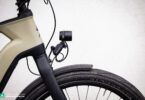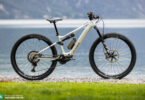Vive la revolution! With the MGU E1.12, Pinion are declaring war on traditional eMTB drivetrains, integrating their gearbox system directly into an electric bike motor. Not only is the motor meant to be powerful, but also to require minimal maintenance, thus ensuring a long service life. Too good to be true?
This review forms part of our big ebike motor comparison test. Here you’ll find an overview of all 13 motors in review, along with lots of exciting background information, and helpful buying advice for your next purchase!
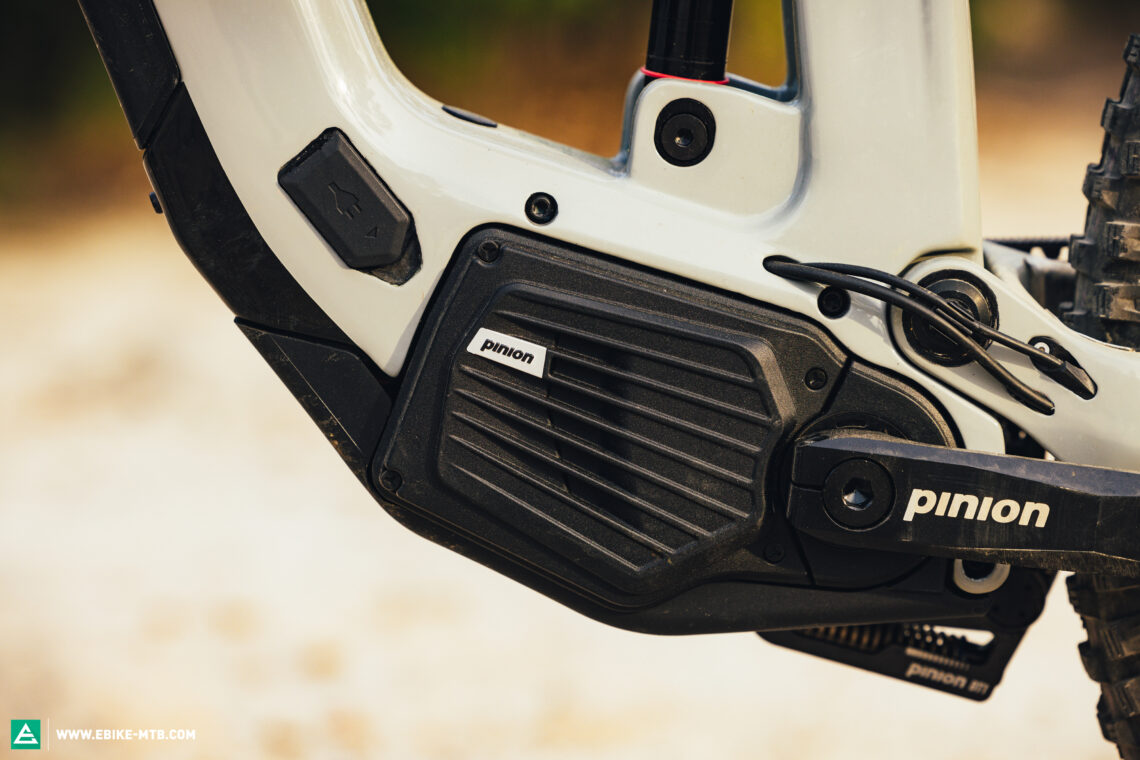
A shifting system that’s safely tucked away inside a sealed housing and at the same time improves weight distribution and suspension performance? That’s nuts, right? Although this might sound too good to be true, a system just like that has been around for ages – the Pinion gearbox. However, the system also has some drawbacks which prevented it from becoming mainstream on analogue mountain bikes. Pinion decided to try their luck with ebikes instead, integrating their gearbox into a proprietary ebike motor. After five years in development, the Pinion MGU was finally released early this summer. In case you’re wondering, MGU stands for motor/gearbox unit. In a nutshell, the encapsulated unit houses the gearbox and shifts electronically, thus completely replacing an external derailleur or geared hub. Now you might ask yourself, why would anyone go through this much trouble when there’s a huge selection of perfectly functioning rear derailleurs available on the market? Well, for starters, rear derailleurs are inherently vulnerable and can be a real pain, both for riders and mechanics. They’re exposed and can easily slam into a rock or other obstacles, and the constant abuse and direct contact with the elements translates into faster wear and a relatively short service life. In addition, a conventional rear derailleur and cassette add to the bike’s unsprung mass, which affects the rear suspension performance – and none of this happens with gearboxes!
The motor/gearbox unit is available in four models, E1.9 and E1.12, giving you 9 or 12 gears, and as a speed variant for S-pedelecs, offering assistance at up to 45 km/h. And while Pinion aren’t the first manufacturer to combine an ebike motor and a gearbox, they could be the first to reach a wider audience. The MGU E1.12 has been highly marketable since its launch and has the potential to boost alternative concepts such as the belt drive in the off-road segment, because it finally works without a hub gear. The Pinion MGU covers a wide field of applications, and bike manufacturers have already integrated the system into countless cargo, e-city and e-road bike models. In the eMTB sector, the MGU E1.12 has already been used by BULLS, SIMPLON and ROTWILD at the time of this test. In contrast to conventional systems, the MGU E1.12 only requires an oil change every 10,000 kilometres, while the rest of the motor/gearbox unit is virtually maintenance free. Should you have an issue, however, first you’ll have to contact ebike systems supplier FIT, which provides the ecosystem around the motor. Alternatively, Pinion has a wide network of authorised dealers all across Europe. If they can’t solve your problem, the motor gets sent directly to Pinion for further troubleshooting. Outside Europe, Pinion’s dealer and service network isn’t that big but will be expanded by the manufacturer over the next few years.
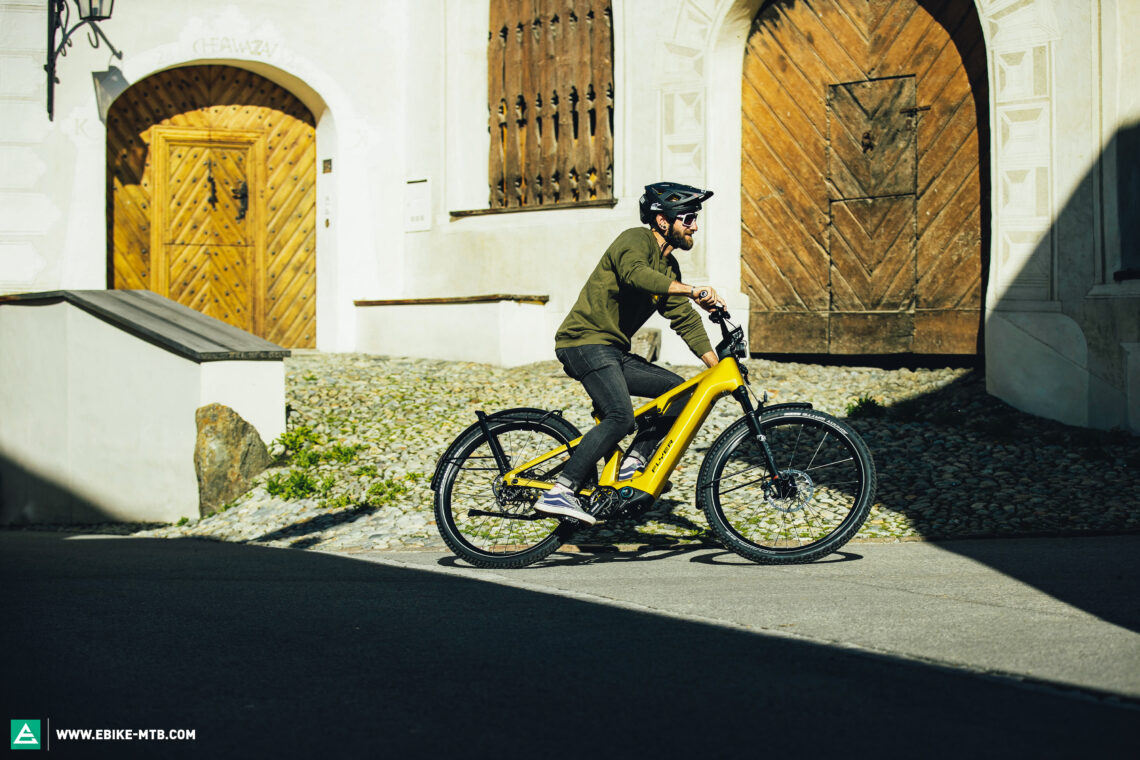
The Pinion MGU E1.12 in detail – Pinion gearbox meets industrial motor
Despite also housing the gearbox, the MGU E1.12 isn’t much bigger than a comparable full-power ebike motor. The first thing you’ll notice is the bare, tidy rear end, which forgoes both a rear derailleur and cassette. Instead, the Pinion relies on a single rear cog and an additional tensioner. Bike manufacturers can choose between a conventional chain or a belt, the latter requiring far less maintenance and improved wear. A tensioner behind the motor prevents the belt from falling off and allows you to adjust the tension externally by means of an industrial-looking spring mechanism. With a conventional chain, the belt tensioner is replaced with a chain tensioner on the rear axle. The Pinion MGU E1.12 motor/gearbox unit tips the scales at 4.1 kg, which is rather heavy compared to the other full-fat motors in this test that all weigh around 3 kg. On the other hand, a conventional e-drive requires a rear derailleur and cassette.
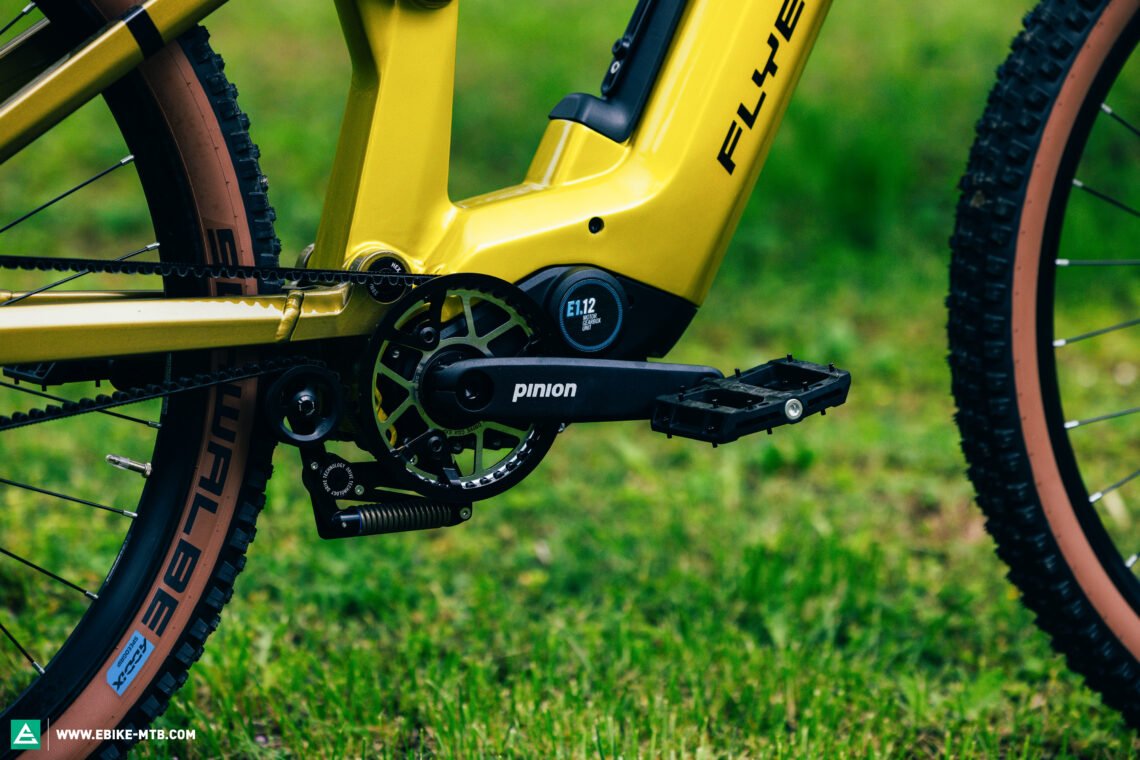
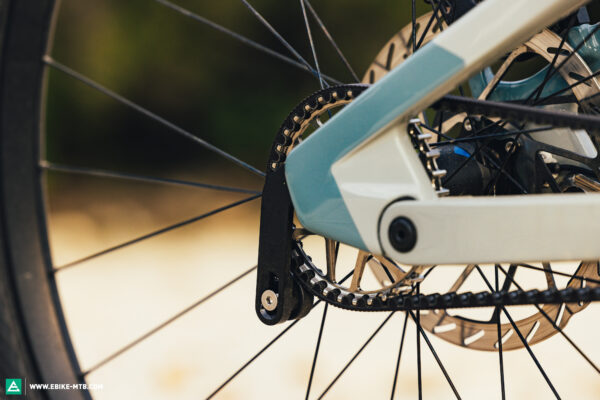

The brushless, industrial-grade motor in the MGU, further refined and tuned by Pinion, can generate up to 600 W of power. Pinion don’t specify a maximum direct torque output, because this can’t be measured without first passing through the gearbox. In our lab tests, however, the MGU delivered a similar performance to the Bosch Performance Line CX, providing slightly more power than the Shimano EP801 drive. The motor provides up to 400% support, which puts it in the same category as powerful units like the Bosch Performance Line CX Race and Brose Drive S Mag.
Swiss e-bike systems experts FIT supply everything other than the motor/gearbox unit. There are four batteries to choose from, one of which is permanently integrated into the frame and has 700 Wh capacity. The other three models are removable and have 480, 720 and 960 Wh capacity, respectively. FIT also offer an optional 468 Wh range extender, which allows you to expand the total capacity to 1,400 Wh in combination with the big 960 Wh battery. The removable FIT Display Compact can be attached to the standard display mount and can be exchanged for the bigger FIT Display Comfort. However, both displays sit right in front of the stem, where they’re exposed to impacts in the event of a crash. The handlebar-mounted FIT Basic remote is rather clunky and relies on a rather small, weird-looking joystick, which takes a little getting used to and makes it hard to operate the remote while riding, especially on bumpy terrain. The remote feels a little odd the first time you use it, as it vibrates each time you make a command. However, this is just as practical as it is weird, as the system lets you know that it has executed the command, and this feature can be deactivated if you don’t get on with it. With the FIT E-Bike Control app, you can connect your smartphone to your bike. Unlike with the Panasonic GX motor system, which also uses the FIT system, the app also lets you adjust the Pinion’s motor settings. To make this possible, the interface was developed in close co-operation with Pinion. The system also displays the remaining range in the respective support mode, but unlike Bosch’s Smart System, doesn’t take into account the altitude gain. Furthermore, you can use the app to display the bike’s last known position, which the system updates automatically when the motor is on. To activate a motion alarm feature, you’ll have to retrofit the FIT E-Bike Tracker.
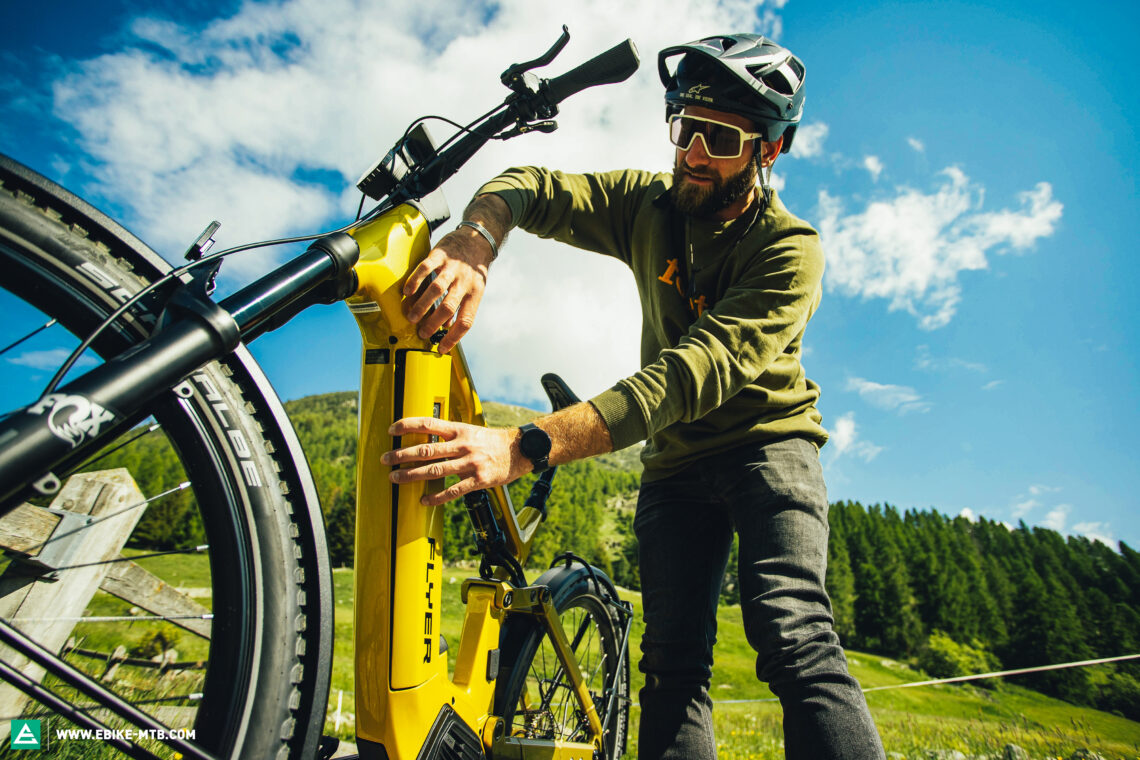
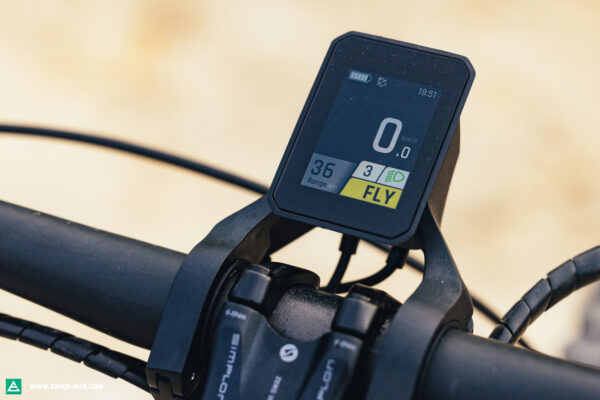
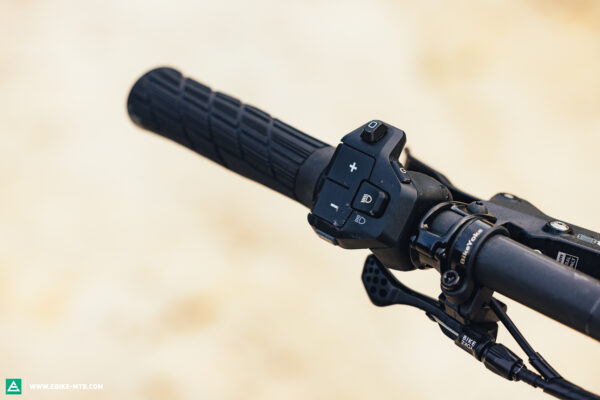
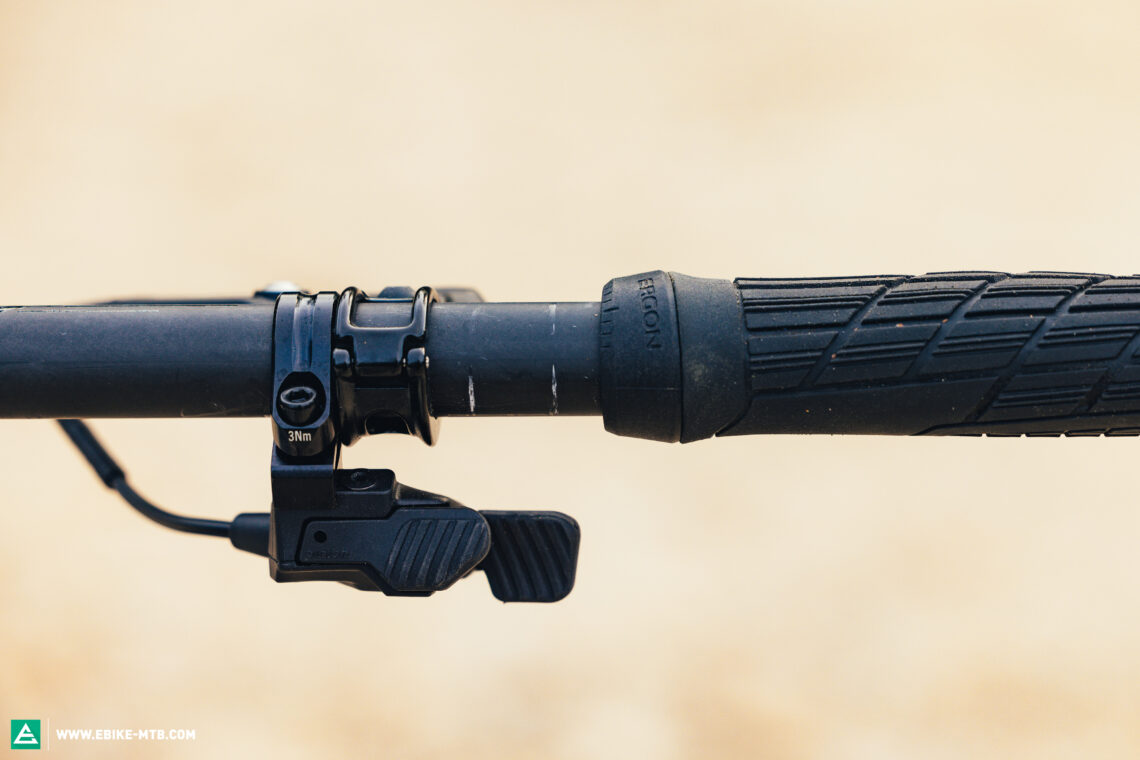
The Pinion MGU E1.12 in review – No mountain to steep
The Pinion MGU E1.12 features four support modes, ECO, FLOW, FLEX and FLY, whereby FLOW and FLEX are progressive modes that adjust the output according to your input. In the strongest FLY mode, the Pinion MGU E1.12 delivers its power directly and rather abruptly, pushing you up the mountain with great eagerness. As a result, the Pinion keeps up with the most powerful motors in this test, the Panasonic GX and Brose Drive S Mag. However, the boisterous character makes it hard to control the motor, especially if you’re an eMTB newbie. Simply put, when pedalling with uneven cadences, the motor reacts with clearly perceivable power fluctuations, making it quite unforgiving of riding mistakes. FLEX mode, on the other hand, is much easier to control despite allowing you to call up the full motor power. The integrated 12-speed gearbox has a 600% overall range. By comparison, conventional 12-speed drivetrains have up to 520 % gear range. As a result, the Pinion gearbox crawls its way up the mountain like a 4×4 with engaged diff-locks, while also allowing you to maintain your speed under your own steam once the motor cuts off beyond the 25 km/h threshold. Timing your gear shifts is a thing of the past, because the Pinion gearbox allows you to change gear even under full load, ensuring smooth gear shifts even on steep climbs. However, when shifting from gear 4 to 5 and 8 to 9, the process takes noticeably longer, because the system shifts two cog pairs simultaneously, which takes a little more time. Changing gears without pedalling is an option too.

One big advantage that the Pinion MGU E1.12 has over conventional motors with a classic drivetrain is that Pinion’s motor/gearbox unit is cleverly networked, meaning that the system is constantly aware of which gear you’re using. Furthermore, the system always knows in which position the cogs and cranks are, and also detects the amount of pressure you put on the pedals. This way, the transmission can wait for the optimal shifting point: the dead centre, which is when the rider puts the least pressure on the pedals. However, if you shift under full load, you’ll feel the cranks give way very briefly. The clever networking also enables the Smart.Shift function, which selects the appropriate gear according to a pre-configured cadence while you’re coasting, preventing you from spinning out when coasting downhill because you’re still in an easy gear from the climb. The electric shifter has excellent ergonomics and pleasant haptic feedback. The noise level of the Pinion MGU varies greatly depending on the gear you’re in. The gearbox makes a grinding noise, which is particularly loud in the four lightest gears. On top of this, the motor emits a high-pitched whirring sound, which gets louder as the cadence increases, making it most noticeable in the lightest gears.. This is both counterintuitive and very annoying, because we tend to chat with our buddies while riding uphill in a low gear and not when riding downhill, when the riding noises are loud as it is.
Our conclusions about the Pinion MGU E1.12
With the MGU E1.12 motor/gearbox unit, Pinion made a sensational debut, backing up big promises with some exciting engineering. By combining their gearbox with a powerful, direct motor, Pinion might have exactly what it takes to change the ebike market – for good! However, the gearbox isn’t smooth enough for performance-oriented use, while the small service network and the rather high price point might be a major issue for many bike manufacturers. In its current evolutionary stage, the motor is most suitable for long-distance tourers, who also benefit from the low maintenance and smart shifting features.
Tops
- Low maintenance
- Reduces the unsprung mass on the rear wheel
- Shifting under full load
Flops
- Loud in the lower gears
- Choppy shifting in some gears
- Abrupt power delivery
- Motor/gearbox unit is heavier than a conventional motor
- Belt tensioner looks rather rudimentary
For more information visit pinion.eu
The test field
For an overview of our big ebike motor comparison test click here
All ebike motors in test: Bosch Performance Line CX (Click for review) | Bosch Performance Line CX Race (Click for review) | Bosch Performance Line SX (Click for review) | Brose Drive S Mag (Click for review) | FAZUA Ride 60 (Click for review) | GIANT SyncDrive Pro2 (Click for review) | Panasonic GX Ultimate (Click for review) | Pinion MGU E1.12 | Shimano EP801 (Click for review) | Specialized SL 1.2 (Click for review) | Specialized 2.2 (Click for review) | TQ HPR 50 | Yamaha PW-X3 (Click for review)
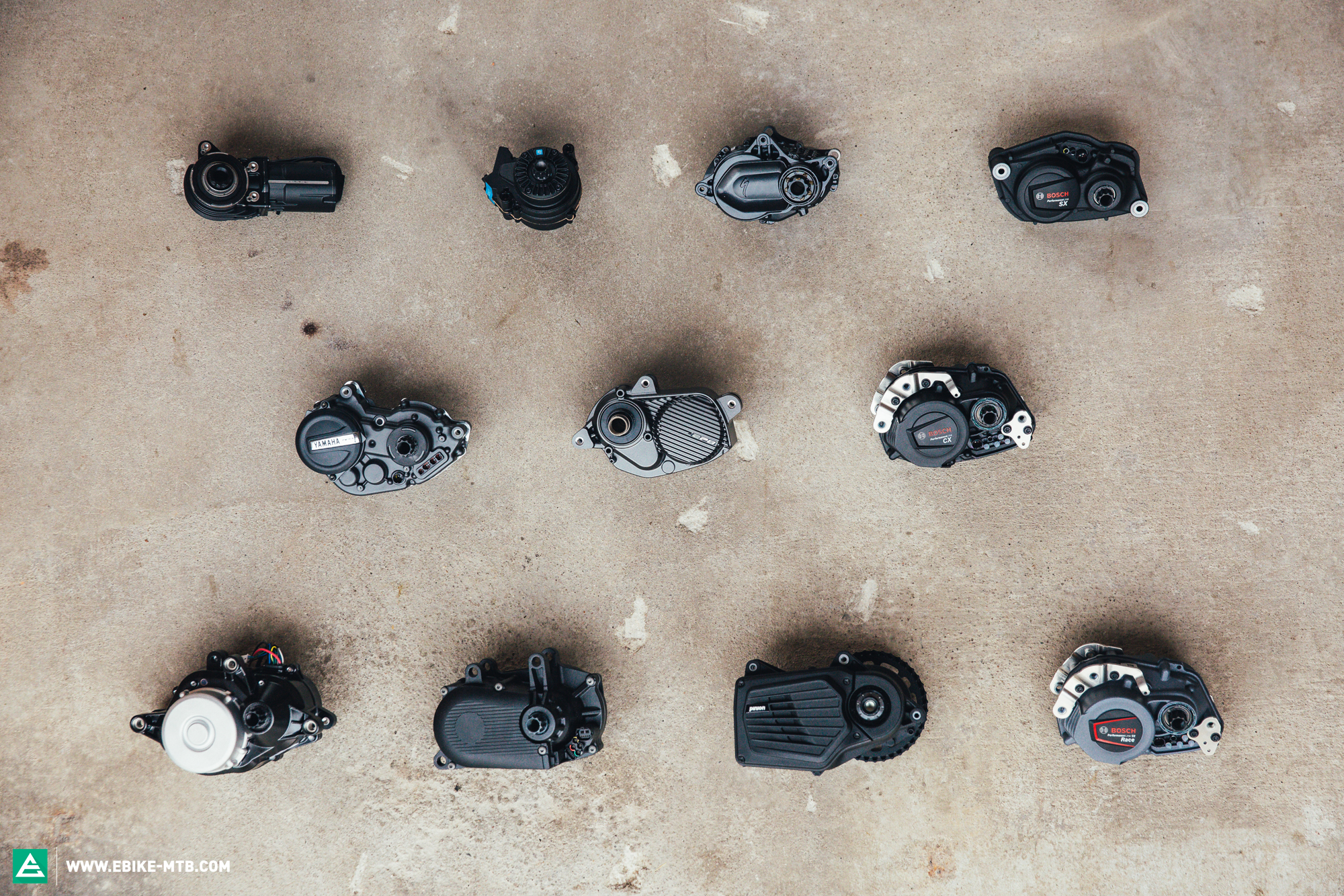
Did you enjoy this article? If so, we would be stoked if you decide to support us with a monthly contribution. By becoming a supporter of E-MOUNTAINBIKE, you will help secure a sustainable future for high-quality cycling journalism. Click here to learn more.
Words: Mike Hunger Photos: Various




